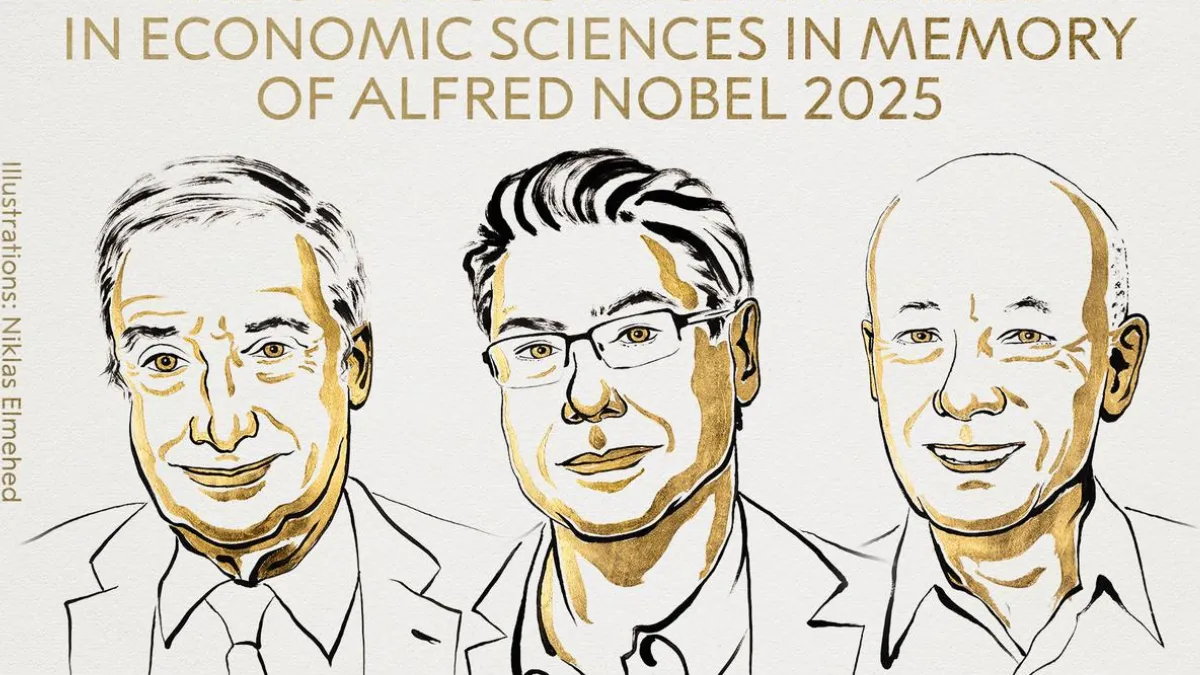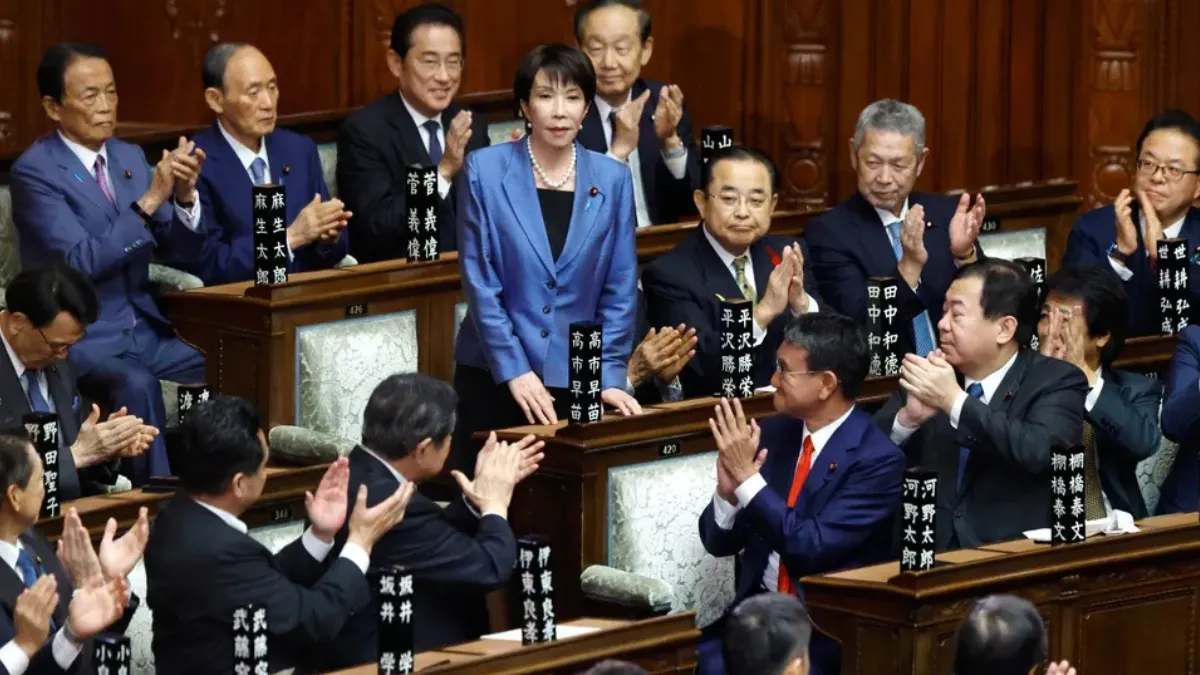In a landmark announcement, the Royal Swedish Academy of Sciences has awarded the 2025 Sveriges Riksbank Prize in Economic Sciences in Memory of Alfred Nobel, popularly known as the Economics Nobel, to Joel Mokyr, Philippe Aghion, and Peter Howitt.
The trio has been recognized “for having explained innovation-driven economic growth”, a subject that continues to define the progress of modern economies in the 21st century.
While Joel Mokyr receives half of the prize, the remaining half is jointly shared by Philippe Aghion and Peter Howitt for their influential work on the theory of sustained growth through creative destruction — a process where innovation drives progress by replacing outdated technologies and systems.
Honoring Pioneers of Innovation Economics
The Nobel Committee’s decision underlines the growing importance of understanding how innovation shapes economies and ensures long-term prosperity.
According to the official citation, Joel Mokyr was honored “for having identified the prerequisites for sustained growth through technological progress”, while Aghion and Howitt were recognized “for the theory of sustained growth through creative destruction.”
Together, their research has transformed how economists, policymakers, and businesses understand the mechanisms behind economic expansion fueled by innovation. Their models and historical analyses have become foundational in explaining how societies transition from stagnation to rapid progress.
The Concept of Creative Destruction
The idea of creative destruction — a cornerstone in the work of Aghion and Howitt — describes how new and better products, technologies, and ideas replace older, less efficient ones, driving progress.
The term was originally popularized by Austrian economist Joseph Schumpeter in his 1942 book “Capitalism, Socialism, and Democracy”. However, Aghion and Howitt elevated the concept from philosophy to mathematical and empirical theory.
Their 1992 paper constructed a mathematical model demonstrating how innovation and competition create cycles of creation and obsolescence. When new inventions enter the market, companies producing outdated goods lose ground — yet society as a whole benefits from higher productivity, better products, and economic dynamism.
This principle of continuous renewal is what keeps economies vibrant and forward-looking. Without such processes, societies risk stagnation, as seen in historical periods when innovation slowed or was suppressed.
Joel Mokyr: The Historian of Economic Growth
Joel Mokyr, born in the Netherlands and now Professor at Northwestern University in the United States, has long been recognized for bridging the gap between economic history and modern growth theory.
Through his research, Mokyr has explored how technological progress became embedded in culture and institutions, turning innovation into a self-sustaining process.
Mokyr’s work emphasizes that the Industrial Revolution was not merely a series of inventions but the result of a cultural transformation — a shift in how societies valued science, experimentation, and progress.
He showed that innovation thrives where curiosity, learning, and openness to new ideas are culturally supported. His historical studies revealed how Europe’s intellectual climate during the Enlightenment laid the groundwork for centuries of economic expansion.
The Nobel Committee highlighted that Mokyr’s findings demonstrate the importance of understanding why innovations work, not just that they work — a key factor in ensuring that one discovery leads to another in an ongoing cycle of progress.
Philippe Aghion and Peter Howitt: Building the Theory of Innovation Economics
Philippe Aghion, a French economist who teaches at the Collège de France, INSEAD Paris, and the London School of Economics, has been at the forefront of research linking innovation to economic policy.
Together with Peter Howitt, a professor at Brown University in the United States, Aghion helped construct the modern framework explaining how economies grow through continuous technological change.
Their joint research explains why innovation requires both competition and flexibility.
If firms fear competition, innovation may slow down. However, too much disruption can also discourage long-term investment.
Their theory thus provides insights into how governments can balance protection and openness to create environments where innovation thrives sustainably.
In his reaction to the Nobel announcement, Aghion expressed deep emotion, saying, “I can’t find the words to express what I feel.” He also mentioned that he plans to invest his prize money into his research laboratory to further explore the dynamics of economic innovation.
The Morning Surprise: Mokyr’s Reaction to His Nobel Call
Joel Mokyr’s reaction to the news was both humble and humorous. When contacted by the Associated Press, he admitted he was caught off guard.
“People always say this, but in this case I am being truthful — I had no clue that anything like this was going to happen,” he said.
Mokyr revealed that his students had jokingly asked him about the possibility of winning the Nobel Prize. “I told them that I was more likely to be elected Pope than to win the Nobel Prize in economics — and I am Jewish, by the way,” he said with a laugh.
Now nearing 80, Mokyr made it clear that he has no plans to retire. “This is the type of job that I dreamed about my entire life,” he remarked, showing the same passion for knowledge and teaching that has defined his remarkable career.
Economic Relevance in Today’s World
The recognition of innovation-driven growth comes at a time when the global economy is facing unprecedented challenges — from technological disruption to trade wars and rising protectionism.
When asked about such global tensions, Philippe Aghion commented, “I am not welcoming the protectionist way in the U.S. That is not good for world growth and innovation.”
His statement reflects the underlying theme of their research — that economic progress depends on openness, exchange, and creative competition, not barriers.
The laureates’ combined work serves as a reminder that innovation is not a luxury — it is the engine of prosperity. Without it, economies risk stagnation, inequality, and long-term decline.
Linking History, Innovation, and Policy
While Mokyr examined the historical roots of growth, Aghion and Howitt built the mathematical and theoretical foundation to explain it. Together, they connect the past, present, and future of economic progress.
Their insights have also influenced modern policy frameworks, helping governments understand how to design systems that encourage innovation.
For instance, Aghion’s recent role as co-chair of France’s Artificial Intelligence Commission (2024) underscores how his research continues to guide real-world decision-making. The commission’s 25 recommendations aimed to position France as a leader in AI — another form of creative destruction reshaping the world economy.
Aghion also helped shape French President Emmanuel Macron’s economic program during his 2017 campaign, highlighting the practical reach of academic economics in shaping national policy.
Why the Economics Nobel Matters
According to John Hassler, Chair of the Committee for the Prize in Economic Sciences, “The laureates’ work shows that economic growth cannot be taken for granted. We must uphold the mechanisms that underlie creative destruction, so that we do not fall back into stagnation.”
His comment captures the essence of the 2025 Economics Nobel — a celebration not just of academic achievement, but of ideas that sustain human progress.
Last year’s Economics Nobel went to Daron Acemoglu, Simon Johnson, and James A. Robinson for explaining why some countries prosper while others remain poor. This year’s award builds on that theme, focusing on how nations can maintain growth once it begins — by nurturing a culture and system that embraces innovation.
About the Economics Nobel Prize
Formally known as the Sveriges Riksbank Prize in Economic Sciences in Memory of Alfred Nobel, the award was established in 1968 by Sweden’s central bank — more than six decades after Alfred Nobel’s original prizes.
Although it is technically not part of Nobel’s will, it is presented alongside the other Nobel Prizes every year on December 10, the anniversary of Nobel’s death.
The prize includes a diploma, a gold medal, and a cash award of $1.2 million (USD), which is shared among the recipients. Like other Nobel ceremonies, the award is presented in Stockholm, Sweden, where the laureates deliver their Nobel lectures explaining their contributions.
A Week of Nobel Announcements
The 2025 Nobel season began with the announcement of the Nobel Prize in Medicine or Physiology on October 6, followed by the prizes for Physics, Chemistry, Literature, and Peace.
The Economics Nobel traditionally concludes the series of announcements, symbolizing how human progress — scientific, literary, and social — ultimately ties back to the systems that sustain innovation and growth.
Also read: Starship News: SpaceX Prepares for Next Major Test Flight
Legacy of the Laureates
Each of the three 2025 laureates has left an indelible mark on the study of economics:
- Joel Mokyr’s deep dive into the Industrial Revolution and cultural roots of innovation has reshaped how historians and economists understand the modern world. His works, such as “The Lever of Riches” and “A Culture of Growth,” remain essential readings for anyone interested in why the West industrialized first.
- Philippe Aghion’s extensive research on growth policy, innovation, and institutions continues to influence global economic strategies. His collaboration with President Macron demonstrates how academic insight can translate into national reform.
- Peter Howitt, Mokyr’s longtime collaborator, helped refine the innovation-based growth model that remains a foundation for today’s economic policy and development planning.
Together, their work bridges theory and practice — explaining not just how economies grow, but why they sometimes stop growing and how to reignite progress.
Also read: SpaceX Set to Launch Starship Flight 11: A Defining Moment in Space Exploration
From Industrial Revolution to AI Revolution
In many ways, the 2025 Economics Nobel recognizes not just past achievements but also the challenges of the future.
As artificial intelligence, automation, and green technologies redefine industries, the theories of creative destruction and innovation-driven growth are more relevant than ever.
Economies today face a new wave of transformation — one that echoes the industrial revolutions of Mokyr’s research and follows the innovation patterns modeled by Aghion and Howitt.
Understanding how to manage this transformation — ensuring that innovation benefits all — will be central to shaping the 21st-century global economy.
Conclusion: Celebrating the Spirit of Innovation
The 2025 Economics Nobel stands as a tribute to the power of ideas that drive human advancement.
By recognizing Joel Mokyr, Philippe Aghion, and Peter Howitt, the Nobel Committee honors not only their individual brilliance but also a collective vision — that progress, knowledge, and innovation are humanity’s greatest assets.
Their work reminds the world that economic growth is not automatic. It must be nurtured through education, open-mindedness, and the courage to embrace change.
As nations grapple with inequality, climate change, and technological disruption, the insights of these Nobel laureates offer a guiding light: innovation is not just about new machines or technologies — it’s about the enduring human drive to create a better future.
















